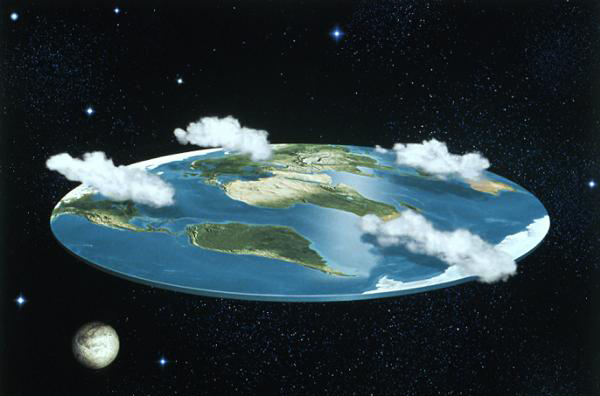The number of people using social media around the globe is projected to hit 3 billion by the end of 2019 — and the average amount of time spent on social media is nearly two hours a day and increasing. People use social media for different reasons, from staying in touch with family and friends, to staying updated with news and current events. However, social media also exposes users to content of questionable “truthiness” such as conspiracy theories, hyper-partisan content, and a veritable minefield of misinformation and fake news.
Perhaps inevitably, some people have come to display a preference for news from social media sources. So a social media platform like YouTube can become a preferred distribution channel for truth-seekers and truth-tellers — though they’re working to change this, as the New York Times notes:
Part of the problem for platforms like YouTube and Facebook — which has also pledged to clean up misinformation that could lead to real-world harm — is that the definition of “harmful” misinformation is circular. There is no inherent reason that a video questioning the official 9/11 narrative is more dangerous than a video asserting the existence of U.F.O.s or Bigfoot. A conspiracy theory is harmful if it results in harm — at which point it’s often too late for platforms to act.
How the World Went from Flat to Round to Flat Again
The flat earth theory refers to the belief that the planet Earth is a flat plane, not a three-dimensional sphere as science suggests. While many ancient cultures thought of the world as flat, the contemporary flat earth theory is fairly recent, dating back to the 19th century, and gained a resurgence in the 1950s after an amateur British cosmologist, Samuel Shenton, created the International Flat Earth Research Society (later renamed the Flat Earth Society) in 1956.
Shenton got his inspiration from Samuel Rowbotham’s 1865 book Zetetic Astronomy, subtitled:
Earth Not a Globe. An Experimental Inquiry into the True Figure of the Earth, Proving it a Plane, Without Orbital or Axial Motion, and the Only Known Material World; its True Position in the Universe, Comparatively Recent Formation, Present Chemical Condition, and Approaching Destruction by Fire, &c., &c., &c.
Don’t you love 19th century book titles? If you want to read more, the PDF is readily available online. It’s an… interesting read. It turns out that Rowbotham was less a scientist or astronomer and more something of a doomsday prophet:
The day is not far distant, nay, even now at any moment some sudden convulsive upheaving of the fiery gulph below, until it reaches and lays bare some of the lower beds of hydro-carbon, may set them on fire. The flames would then rapidly extend; and the fiery action swiftly run along the various and innumerable veins of combustible matter which ramify in every direction throughout the whole earth…. we see clearly that such a chemical action or fire would rapidly increase in intensity, and fiercely rush in all directions, until the whole earth, with everything entering into its composition and dwelling upon and within it, would perish, decompose and volatilise, and burst into one vast indescribable annihilating conflagration….
Enter Social Media
If Rowbotham’s 150-year-old “fiery end of the flat world” thesis seems a dubious source for a modern view of the universe, it is.
Or, it was. Until social media entered the picture.
In 2009, the Flat Earth Society was reorganized and launched an informational website containing flat-earth related content. After this reorganization, the contemporary and controversial ‘Flat Earth Movement’ was born — and quickly began to gain converts thanks to modern social media, which contributed immensely to its spread.
Many people come across the theory as they surf the internet. On social media, the Flat Earth community commits to make the movement visible through Facebook pages, YouTube documentaries, Reddit posts, and Tweets. The community’s efforts have been remarkably successful, with its YouTube documentaries getting more than half a million views and various Facebook pages getting tens of thousands of likes.
According to research by a team at Texas Tech University, YouTube in particular is to blame for the rise of the theory after the first flat earth videos were posted on YouTube in 2014:
“YouTube is where the first flat Earth videos were posted around 2014, which launched the movement that we see today,” Alex Olshansky, a researcher from Texas Tech who specialises in science communication and misinformation, told ScienceAlert. “Because YouTube’s algorithms recommend videos that are similar to what you are already watching, many people who were watching other conspiracy videos, found a flat Earth video in their recommended feed and proceeded down the rabbit hole.”
In other words, the YouTube algorithm that offers you more of what it thinks you want to see has contributed to the rapid growth of so-called “conspiracy theories.” And this and other factors across various social media may be helping to push people towards a more partisan, echo-chamber online experience.
As for the Flat Earth movement, it’s now spreading beyond the internet into the real world with the formation of Flat Earth Think Tanks, networking apps, and the launch of the Flat Earth International Conference. The spread of this perplexing theory is truly a testament to the power of social media — for good or ill.
There’s no turning back the clock on social media. Its use will intensify in the future as more platforms emerge and people spend more time online via their computers, smart phones, or brain-chips. However, moving forward it might be wise to be mindful of the unintended consequences of social media, like the dissemination of questionable content that could, if taken too far, lead to unpleasant consequences — like the defunding of NASA, for example. After all, some of us are still hoping to visit the Moon before our time’s up.










